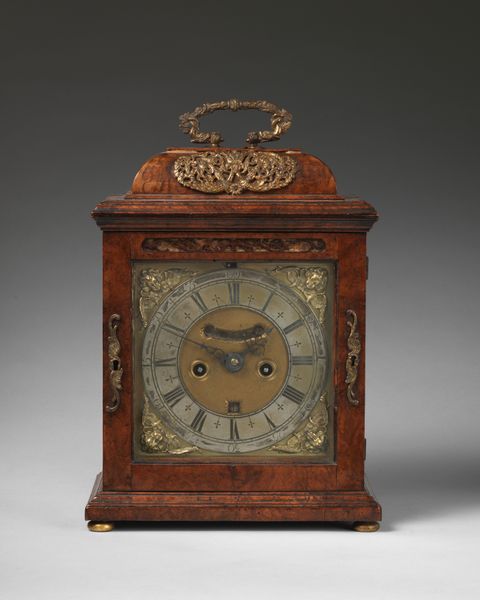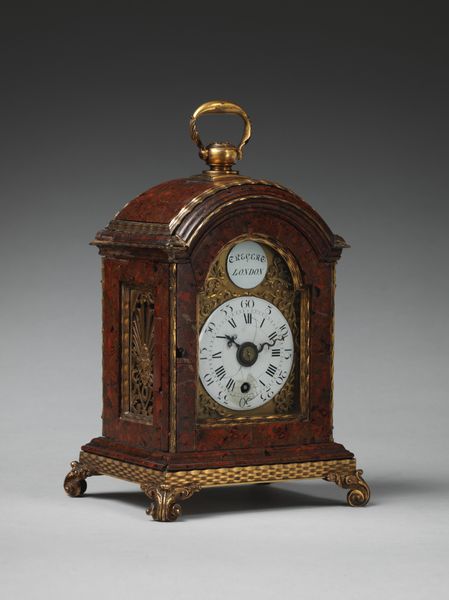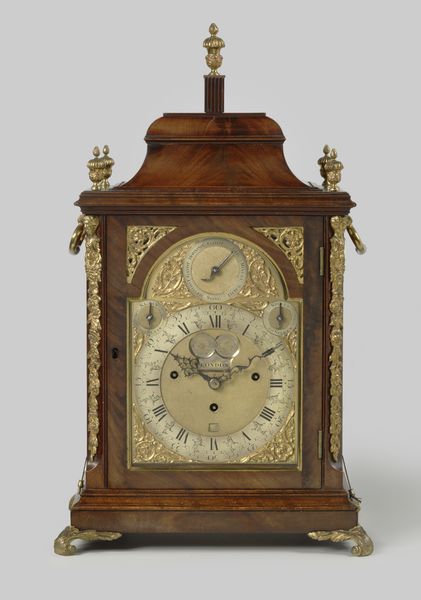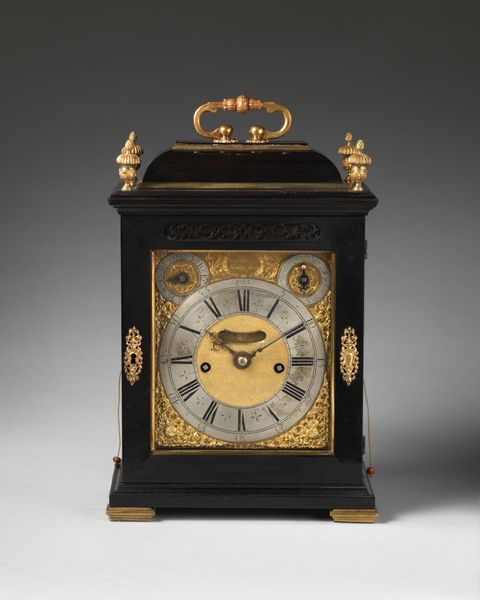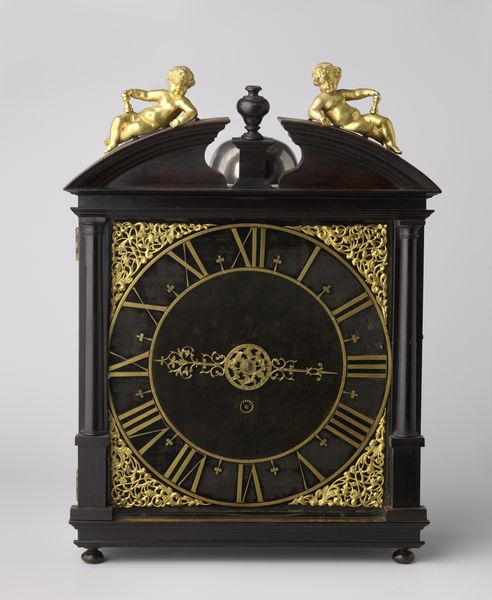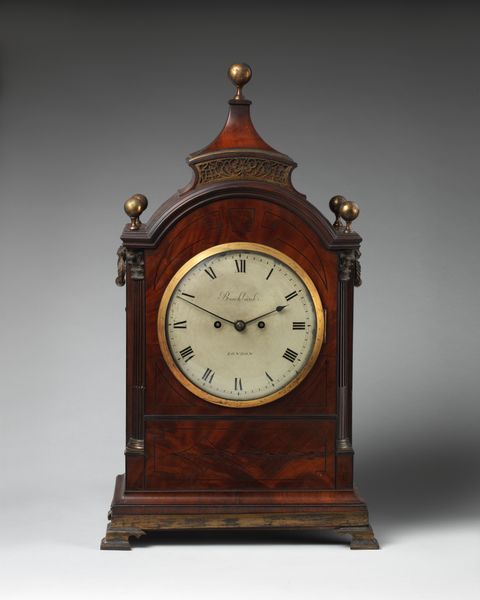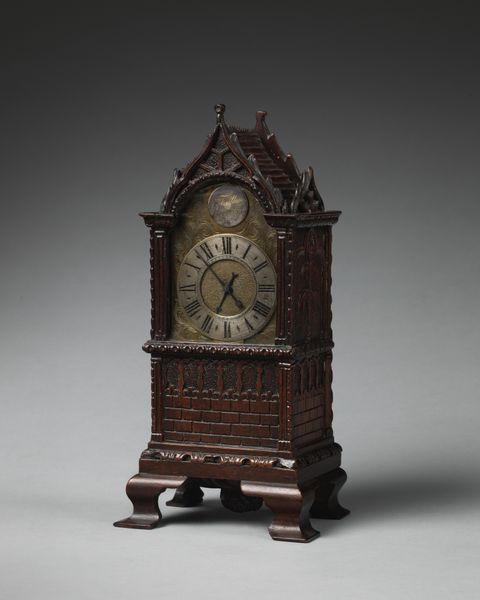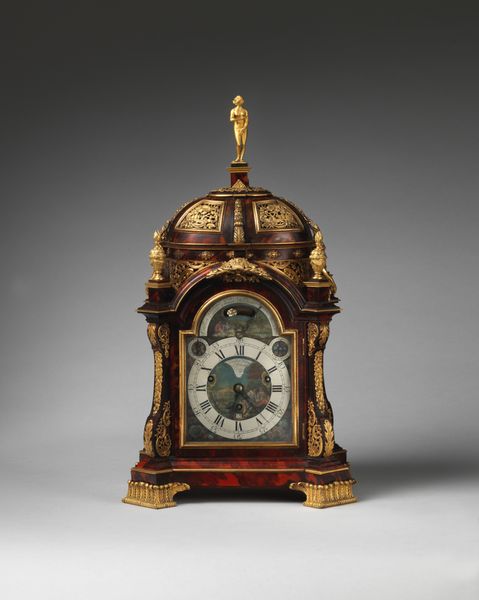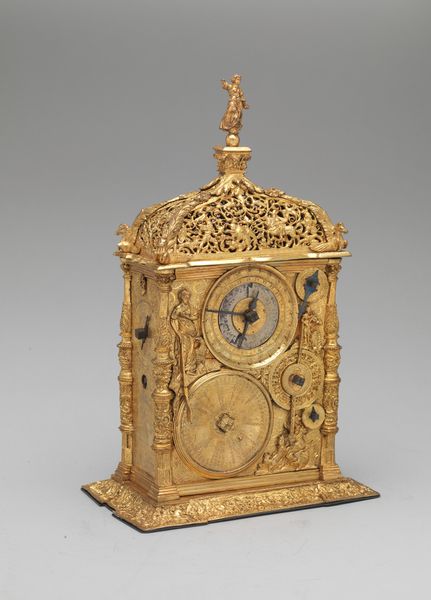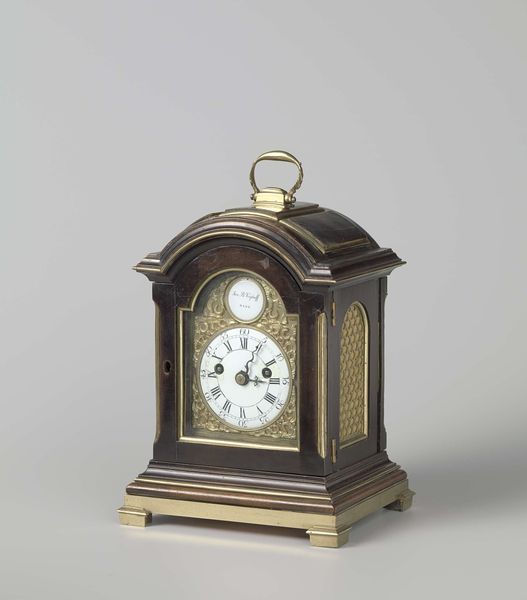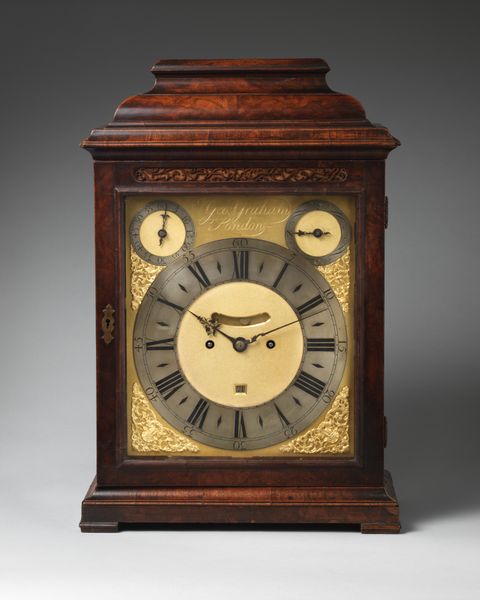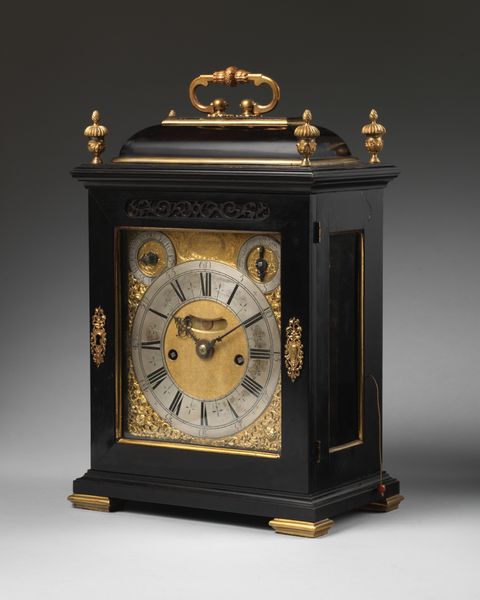
metal, sculpture, wood
#
baroque
#
metal
#
sculpture
#
sculpture
#
wood
#
decorative-art
Dimensions: Overall: 15 1/2 × 10 × 6 1/2 in. (39.4 × 25.4 × 16.5 cm)
Copyright: Public Domain
Curator: Oh, there's something grounding about this piece. Like a small, ornate building somehow holding time itself. Editor: Absolutely. What a splendid specimen of late 17th-century craftsmanship! This table clock dates back to 1690 and is currently held at the Metropolitan Museum. You’ve got such a dense layering of material here—wood, metal, the painted dial. The whole history of artisanal practice packed into one object, no? Curator: Precisely! The weight of the baroque—all that intricate detail almost feels like a dam holding back…what, chaos? Time flowing without measure? And it's not just functional. Look at how the decorative elements work with the whole to conjure almost an imaginary building. Editor: Note the visible hinges, pins, and other connections of various pieces of material. It’s such a curious mix of the obviously and deliberately worked with fine decoration. And where was it meant to sit, right? A wealthy patron’s bedside table? These objects signified a certain degree of cultural and financial capital. Curator: It speaks of privilege, for sure. But maybe, more deeply, it reflects our human obsession with control, the yearning to capture something as intangible as time within a tangible form. Does all that gilt-work calm, or is it trying too hard? Editor: Well, look closer at the dial, how time itself is materially represented. What looks like a division of hours or a calendar has now come adrift. One might not tell the time on it at all. Now it merely is a monument to itself as crafted material. Curator: And perhaps that is the true beauty. We glimpse our own mortality, our desperate dance with time, in every tick. Knowing full well that time…will march on. It really puts my everyday anxieties in perspective. It will continue its patient, steady creep and we can't really do much. Editor: Yes, it stands here today, like the vestiges of past empires; broken but somehow also permanent. These traces of material and labor will carry on as markers, indexes, imprints and the passing of human attempts and making something.
Comments
No comments
Be the first to comment and join the conversation on the ultimate creative platform.
